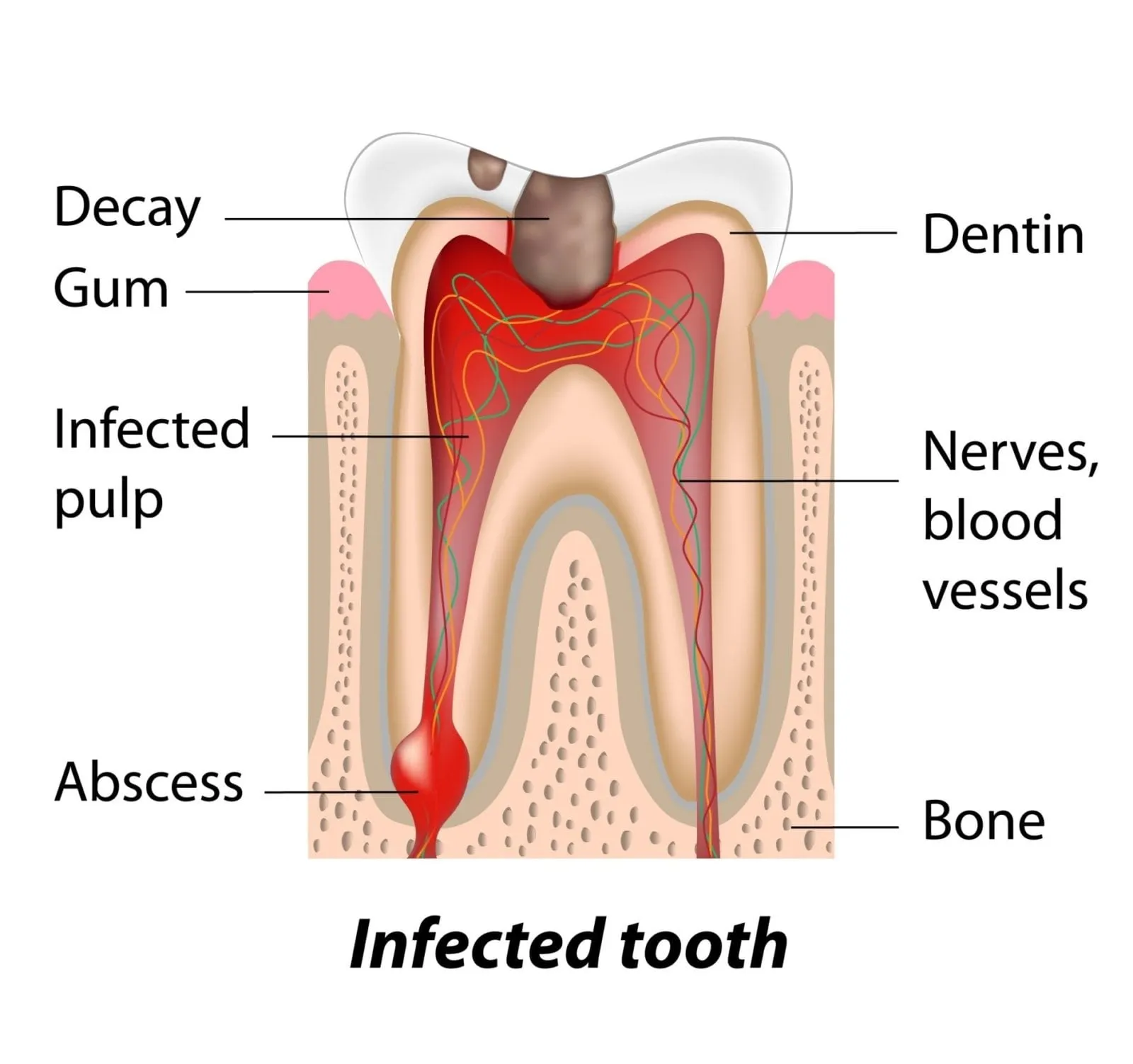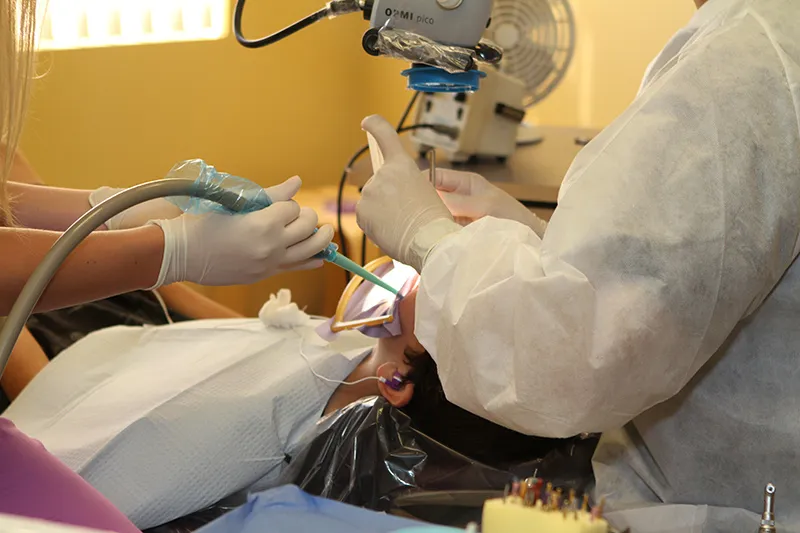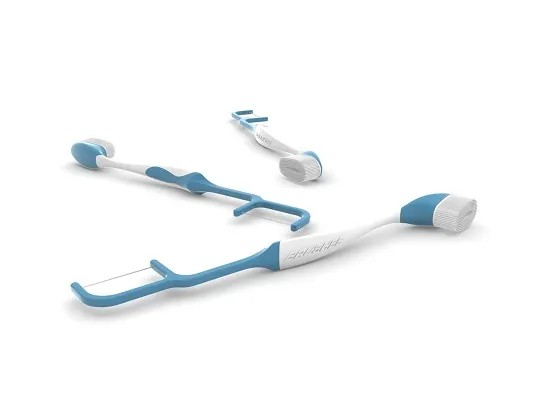Breaking a tooth can be a painful and unpleasant experience. Teeth can break for a number of different reasons, including decay, failing restorations, small cracks or “craze lines” in teeth, and of course, accidental trauma. It should be pointed out that a “broken” tooth refers to something different than a “cracked” tooth. A cracked tooth is one that has a small crack in it, but the tooth itself is more or less intact. A crack in a tooth can be thought of like a crack in a car’s windshield. In spite of the presence of a crack, the windshield remains intact. Similarly, cracks in a tooth can slowly spread over time, like those in a windshield.
A broken tooth, on the other hand, refers to a tooth that has literally broken and lost a portion of its clinical crown—the part of the tooth visible above the gum line. A broken tooth is a vastly different clinical situation than a cracked tooth. A broken tooth will require almost immediate treatment, either in the form or a large restoration, or, more commonly, a crown.

Root canal treatment for broken teeth is very common. The reason depends on the exact nature of the break, how much tooth structure is left, and how much of that tooth structure is healthy and free of decay. Furthermore, the specific tooth in question has an impact on the decision to perform endodontic therapy on a broken tooth.
Understanding Root Canal Treatment for Front Teeth
Root Canal Treatment for Broken Teeth in the Front of the Mouth
Anterior teeth (teeth toward the front of the mouth) tend to break for different reasons than posterior teeth (those toward the back). Front teeth are most commonly broken due to some sort of trauma. In other words, a physical event that causes accidental breaking of the tooth. There are different degrees of broken teeth that fall into a codified classification system known as the “Ellis classification.” Ellis classifications 1 and 2 are fractures that do not involve the pulp, and in most cases will not require a root canal unless symptoms of pulpitis develop over time. Ellis class 3 fractures are those in which the pulp is exposed as a result of the fracture, a condition that necessitates a root canal.
In some instances, a root canal on a front tooth—as well as some premolars—may be needed more as a prophylactic measure. For instance, if it is determined that a front tooth needs a crown, but does not have enough healthy tooth structure, a root canal may be needed to facilitate the crown. The reason is that what is known as a “post and core” will be needed to allow for placement of the crown. A post and core consist of a post that is placed approximately halfway down an empty canal within a tooth’s root. The post sticks out of the top of the canal, above the gum line. Around the top portion of the post, synthetic material is built up in order to create an adequate surface area on which to cement a crown. This synthetic material comprises the “core.” Obviously, placing a post inside a tooth’s root is not possible unless the nerve has been removed via root canal treatment.
In rare instances, a tooth may break not on the crown, or visible part, but within the root itself. Usually, this is not a treatable condition, but if the fracture occurs near the tip of the root, the tooth may still be able to be saved. Advanced procedures such as apicoectomy may be needed instead of a traditional root canal, but the end result is the same: the nerve is removed from the tooth.
Root Canal Treatment for Broken Teeth in the Back of the Mouth
Teeth toward the back of the mouth that fracture may need root canal therapy for different reasons than front teeth. Most posterior (back) teeth break due to decay that undermines tooth structure, failing restorations, or old dental fillings that have placed physical stresses on the tooth over time. Because back teeth obviously have more tooth structure than front teeth, posts and cores are rarely needed. The most common reason a broken posterior tooth needs a root canal is exposure of the nerve or residual decay that, when removed, will cause nerve exposure.
Depending on the severity of the break, a root canal may not be possible. Fractures that extend far below the gum line or into the roots of the tooth usually require extraction of the tooth. The same is true for front teeth.
Posterior teeth typically do not suffer from root fractures like anterior teeth, but if they do, procedures such as root amputation may be needed to save the tooth. Root amputation is performed only on multi-rooted teeth, such as those in the back of the mouth.

In summary, root canal treatment for broken teeth is often essential to saving a tooth and keeping it functional and healthy. Whether the pulp is exposed as a result of the fracture, or if decay undermines a tooth and threatens the nerve, the intent is always the same: to remove the pulp in order to make restoration of the tooth viable.
If you have a broken tooth but are not in pain, you should still see your dentist or endodontist right away. Teeth broken due to decay can continue to decay until the root is exposed. Even teeth with a “clean break,” so to speak, are much more prone to developing decay, which can quickly reach the nerve if left untreated.
The good news is that in almost every case of a fractured tooth, root canal therapy and an appropriate restoration, such as a crown, can save the tooth for the long term. This is undeniably a better option than simply removing the tooth and opting for an implant or dental bridge. There is simply no replacement for your natural tooth, even if it has been broken.



